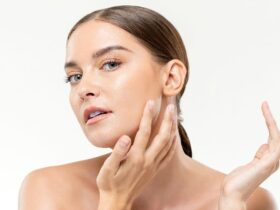Some concepts are often confused since they seem the same, but in reality, they are not. The world of skincare is no exception, and the terms balm and cream are often used synonymously, although they have substantial differences in composition, texture, and specific uses.
In this article, we tell you in detail about their differences so that you know when you should use each one.
Differences
As we mentioned, the main difference between a body balm and a cream lies in their composition, texture, and specific uses in skin care:
Composition
Balms usually contain a high concentration of moisturizing ingredients, emollients, and often waxes or oils. These ingredients are formulated to provide a protective layer on the skin and seal in moisture, helping to soothe, nourish, and protect the skin.
Creams contain a combination of water and oils, along with emulsifying agents that hold these ingredients together. Creams can have a variety of consistencies, from light to thicker, and may contain active ingredients specific to various skin types or needs.
Texture
Body balms have a denser, thicker, and more creamy texture than creams. Due to their consistency, they are typically richer and offer a more nourishing and protective feel when applied to the skin.
Creams usually have a lighter texture and are easily absorbed into the skin. They can offer hydration, nourishment, and protection but are generally not as thick or occlusive as balms.
Common uses
The balms are ideal for specific areas of the skin that require more intense hydration or where the skin may be drier or cracked, such as dry lips, elbows, or cracked heels.
Creams are more versatile and are commonly used in general skin care to provide daily hydration to larger areas, such as the face, hands, arms, and legs. There are also specific creams for different skin types, such as dry, oily, sensitive skin, or skin with anti-aging needs.
Can they be combined?
It is possible and often beneficial to combine the use of cream and body balm in your skincare routine, depending on the specific needs of your skin and the areas you wish to treat.
For example, if you need extra hydration on certain areas of your body, you can apply a light moisturizer all over and then use a balm on drier, rougher areas such as elbows, knees, heels, or lips. The cream will provide overall hydration, while the balm will offer more concentrated, long-lasting hydration in those specific areas.
Remember that the key is to observe how your skin responds to the combination of products. If you use both and notice any irritation, sensitivity, or uncomfortable sensation on your skin, you can adjust the amount or frequency of use to find the right balance.
Tips for choosing the right body balm

To determine if a body balm is suitable for your skin, you can evaluate several aspects, such as its ingredients, effectiveness in moisturizing the skin, texture, absorption, and how your skin responds to its use. Here are some tips to consider:
- Ingredients list: Check the ingredients of the balm. Look for hydrating components such as glycerin, hyaluronic acid, natural oils (such as coconut oil, almond oil, jojoba oil, etc.), butter (such as shea butter, cocoa), and antioxidants (vitamins E and C) that are beneficial for the skin.
- Absence of irritating ingredients: Avoid balms that contain strong fragrances, alcohol, or ingredients that can irritate your skin, especially if you have sensitive skin.
- Moisturizing efficacy: See how your skin responds after applying the balm. You should notice an improvement in the softness and hydration of your skin. A good one should provide long-lasting hydration and effectively relieve dryness.
- Texture and absorption: The texture should be rich and nourishing but not leave a heavy or greasy feeling on the skin. It should be absorbed relatively quickly without leaving a sticky layer.
- Compatibility with your skin type: Make sure it is suitable for your skin type. For example, if you have oily skin, look for lighter, non-comedogenic body balms that won’t clog pores.
- Skin reaction: Test a small area of skin to check for any allergic reaction or irritation before using the balm completely.
- Reviews and opinions: Look for reviews and opinions from other users about the product. Other people’s experiences can offer valuable information about the effectiveness and quality of the balm.
In short, the main difference between a body balm and a cream lies in the consistency, density, and specific application in skin care. Balms tend to be thicker, richer, and used for intensive hydration in specific areas, while creams are lighter, versatile, and applied to broader areas of the skin for general hydration and nourishment.
















